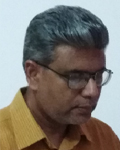Till Sun and Moon Shines [Part 13]
By Eng. (Dr.) Chandana JayawardanaSeveral past columns were dedicated to discuss the components of ancient small village tanks and how such components would have contributed to the sustainability of the system. Those man-made physical structures were complying with the natural water cycle, so that the principle of cyclicity is maintained. Last two columns were dedicated to discuss infiltration and percolation, two passages of water in the water cycle. In this column, we will discuss how the ancient system was aligned with the evaporation, another passage of water in the natural water cycle.
Evaporation
In natural hydraulic cycle, evaporation and transpiration due to photosynthesis are considered as the prime means of water exchange from the land to the atmosphere. Like infiltration, evaporation is also considered as a loss according to the present hydrology engineering point of view. Brohier, even widely read and an acclaimed authority on the subject, concluded the vast amount of small tanks is an inefficient hydraulic entity, because of the high rate of evaporation during the dry months. This hypothesis led him to postulate a four stage development theory on ancient irrigation systems with small village tanks as a basic stage giving way to mega scale reservoirs with advancement of technology. However, according to Mendis, this perception mis-represented the eco system sustainability of small village tank cascade systems, leading to an alternative seven stage development system.
Forming a qualified hypothesis explaining our ancestors’ attitudes towards evaporation from the man made water structures is not possible due to the lack of research literature. But a conjectural opinion may be formed, by considering native attitudes towards the rainfall patterns. As indicated previously, the regions with highest small tank cascade density are North-Western and North-Central provinces. These regions receive rain through North-East monsoon (NE) during November – February months as well as through convection falls during inter monsoon periods. Vernacular terms like nikini paluwa (or wal-eta wessa) and akwessa are referring to these convection rains, indicating the fact that our ancestors distinguished this type of rainfall from the monsoons. Panabokke notes the inter-monsoon period during October – November is the most evenly balanced rainfall period in Sri Lanka, and therefore planting of crops for the major maha season is associated with the beginning of this period. These rains are mainly of the convective type together with those associated with depressions.
Evaporation from the widely distributed small tank water surfaces would have a considerable contribution towards the convection rainfall. Although convective type could not be strictly categorized as a localized rainfall pattern, the contribution of evaporation from the local bodies, might be a prime contributor compared with the monsoon type. Under such purview, our ancestors’ attitudes might not support the present hydraulic engineering perspective of treating evaporation as a loss of irrigated water. Less reliable; less predictable monsoon rains might have occupied a less importance in their agricultural practices while the focus might be on convection rains. Even though whether patterns may not be assigned to a specific locality, convection rains would have been considered as reliable source of rain water.
References
Brohier, R.L., Food and the People, Lake House Investment Ltd., Colombo, 1975, p. 9.
Mendis, D.L.O., How Hydraulic Engineering Under-Developed Southern Sri Lanka, Transactions of The Institute of Engineers, Vol. I, Colombo, 1992, pp. 221-229.
Panabokke, C.R., Soils and Agro – Ecological Environments of Sri Lanka, Natural Resource Series No.2, Natural Resources, Energy and Science Authority of Sri Lanka, Colombo, 1996, p. 123.
 Eng. Chandana Jayawardana has earned his first degree in Electrical Engineering from University of Moratuwa and then, post graduate qualifications in Industrial Engineering and Buddhist Studies. He is currently working as Design Manager, Balfour Beatty Ceylon (Pvt) Ltd, Katunayake.
Eng. Chandana Jayawardana has earned his first degree in Electrical Engineering from University of Moratuwa and then, post graduate qualifications in Industrial Engineering and Buddhist Studies. He is currently working as Design Manager, Balfour Beatty Ceylon (Pvt) Ltd, Katunayake.





